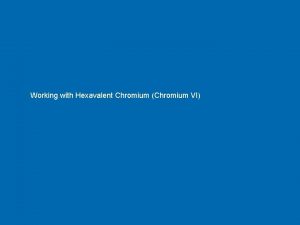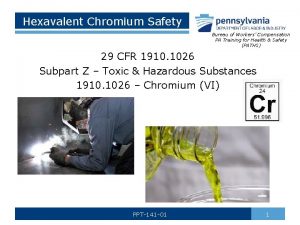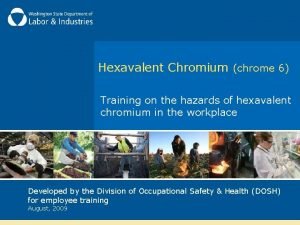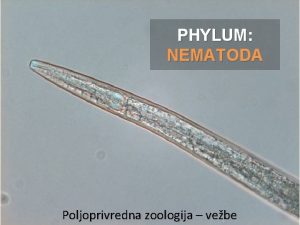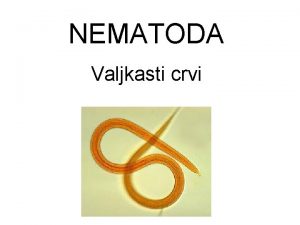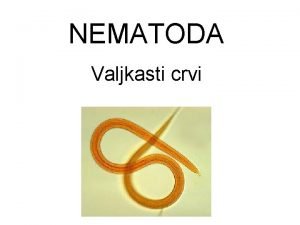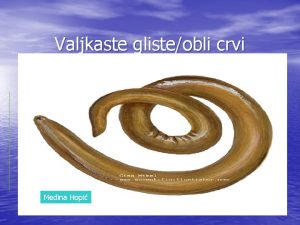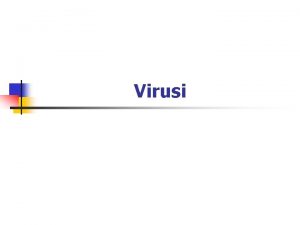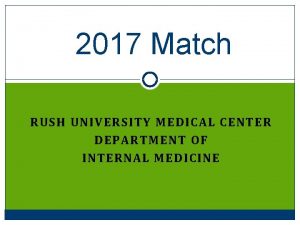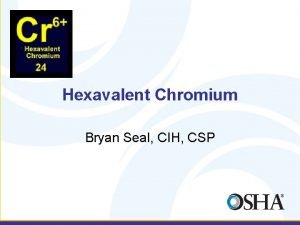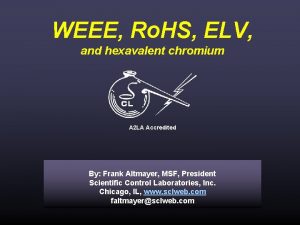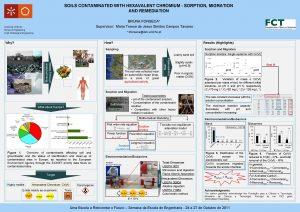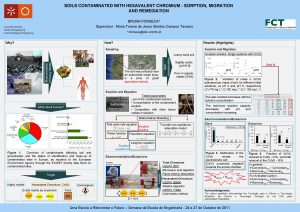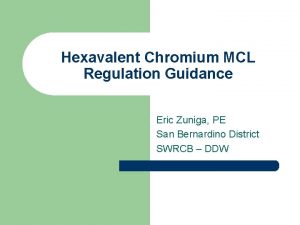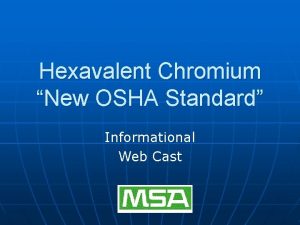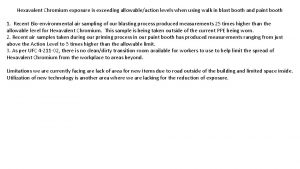PLACING HEXAVALENT CHROMIUM CrVI IN SOUTH AFRICA IN


















- Slides: 18

PLACING HEXAVALENT CHROMIUM -Cr(VI)- IN SOUTH AFRICA IN THE SPOTLIGHT ILZE KEEVY SURINA ESTERHUYSE University of the Free State, Bloemfontein, South Africa

Facts on Chromium � Natural element occurring in rocks, plants, soil, and volcanic dust. � Used for chrome plating, production of stainless steel, textiles, the manufacture of dyes and pigments, leather tanning, wood preservation, as an anti-corrosive and burning of fossil fuels. . . � Chromium compounds in environment: Trivalent chromium - Cr(III) occurs naturally as essential element (50 – 200 ug/d recommended for adults), nontoxic and no carcinogenic risk, and Hexavalent chromium – Cr(VI) heavy metal, highly toxic, extremely soluble and mobile in water and classified by the EPA a human carcinogen (inhalation route of exposure – oral route via drinking water). Hinkley, (USA), Jin. Zhou (China).

Facts on Cr(VI) � Cr(VI) highly accessible to living organisms through multiple routes of entry – digestion, dermal contact, inhalation, absorption (plants). � Cr(VI) exposure via inhalation, dermal or oral exposure induces tumour formation (Mc. Carroll et al 2010). � US National Toxicology Program (NTP) classified: - Cr(VI) as a carcinogen in animals and humans via inhalation, - Cr(VI) as carcinogenetic and mutagenic in animals and humans via drinking water, - Cr(VI) as inducer of germ cell mutagenicity and DNA deletions in developing embryos.

Facts on Cr(VI) �US EPA classified Cr (VI) as class A human carcinogen, �The National Institute of Occupational Safety and Health (NIOSH) listed Cr(VI) as one of the major causes of occupational cancer, �The International Agency for Research on Cancer (IARC) classified Cr (VI) as a human carcinogen, and �One of 33 compounds listed to pose the greatest potential health risk in urban areas. �The State of California classified Cr(VI) as a chemical known to cause cancer (38% of municipal sources of drinking water in California have detectable levels of Cr(VI).

Facts on Cr(VI) �In United States tap water tests revealed that 31 out of 35 cities contained Cr(VI), and in 25 cities the levels were at a level that presented a carcinogenic risk (Sutton, 2010). �At least 74 million Americans in 42 states drink chromium-polluted tap water, much of it likely in the form of cancer-causing hexavalent chromium (Sutton, 2010). �USA : Biggest importer and producer of Cr related compounds.


. Chromium mining statistics for SA and other countries Chromium ore mining statistics as a percentage of world production (Papp, 2006 -2008) Year South Africa India Kazakstan Other countries 2008 41% 16. 4% 15. 3% 27% 2009 41% 16. 9% 15. 6% 27. 4% 2010 39% 17% 15. 4% 28. 6% � SA is the leading chromium producer in the world (Papp, 2009 & Papp 2010). � Global chromium losses from average world chromium production figures are estimated at 14% lost to tailings and 12% lost to ferrochromium slag. Only 74% of ore are sent to fabrication (Johnson et al, 2006). � Chromium beneficiation losses in South Africa are mostly in the form of slag and waste dumps associated with chromium mining and ferrochromium smelting (Johnson et al, 2006).


Google Earth, 2011

Total Cr and Cr(VI) standards (international and in South Africa) Currently being reviewed Total Cr limit Cr 6 limit mg/L N 0. 05 No value specified Y 0. 1 Y 0. 05 No value specified Y 0. 00006 Dutch intervention values N 0. 03 South African Water quality guidelines for domestic use N 0. 05 0. 03 0. 05 (same as Total Cr, not specific for Cr(VI) Unit World Health Organization provisional guideline value United States Environmental Protection Agency (maximum contaminant level) California EPA current maximum contaminant level California EPA public health goal proposed

Current situation in South Africa �The official standard for total Cr in South Africa is 0. 05 mg/L with no specific standard for Cr(VI). The total Cr limit is generally applied for Cr(VI) as well. �Department of Water Affairs does not analyze for Cr(VI) as part of the standard suite of background monitoring for groundwater, only total Cr. �IWQS has official data on approximately 30 sites that are being monitored nationally by the DWA for Cr(VI). �In SA no data for Cr(VI) in drinking water in general. �What are the statistics in South Africa?

Current situation in South Africa �“Widespread pollution of the environment with Cr(VI)” (Opperman & van Heerden 2006). �SA History: leachate from chromium waste dumps dating from 1942 polluting ground water with Cr(VI). �Bioremediation by means of bacteria (bioreactors). �Who is assuming responsibility for rehabilitation of chromate dumps and remediation of pollution of ground and surface water by hexavalent chromium?

Case study: Jin. Zhou (China) � 1965: One chromium ore smelting resulted in Cr(VI) groundwater contamination of nearby villages – Cr(VI) plume spread out down gradient. � 1967: After various mitigation measures Cr(VI) in the underground water started to decrease and become stable. � 1974: contaminated area of 45 square kilometres. � 1994: Chinese government stated: “. . . A chromium residue disposal site in Jin. Zhou caused groundwater pollution in a 12. 5 square kilometre area ; as a result , water in 1, 800 wells in nine villages is no longer potable” (Sedman et al 2006).

SA Constitution S 24 of the SA Constitution: � Everyone has the right – ent to �a) or well – being; and � b) to have the environment protected, for the benefit of present and future generations, through reasonable legislative and other measures that – � i) prevent pollution and ecological degradation; � ii) promote conservation; and � iii) secure ecologically sustainable development and use of natural resources while promoting justifiable economic and social development.

National Water Act 36 of 1998 �Acknowledges the National Governments overall responsibility for and authority over the nation’s water resources and their use. . . �S 2(h) states the purpose of the act as reducing and preventing pollution and degradation of water courses. �S 19: pollution prevention. National Environmental Management Act 107 of 1998. S 28: Duty of care and remediation of environmental damage.

Recommendations �A distinction should be made between Cr and Cr(VI) in the SA water standards – specific values for Cr(VI) in the light that SA is the largest producer of Cr. �Cr(VI) in groundwater as well as tap water should be regulated. �Rehabilitation of Cr(VI) as heavy metal in waste to ensure sustainability of groundwater sources. �Compliance and enforcement of environmental law.

Environmental justice Access to safe water is a fundamental human need and therefore a basic human right Contaminated water jeopardises both the physical and social health of all people. It is an affront to human dignity. Kofi Annan, UN Secretary General.

References � Nickens, K. P. , Patierno, S. R. , Ceryak, S. 2010. Chromium genotoxicity: A double-edged sword. In Chemico-Biological Interactions 188: 276 -288. � Mc. Carroll, N. , Keshava, N. , Chen, J. , Akerman, G. , Kligerman, A. , Rinde, E. 2010. An evaluation of the Mode of Action Framework for Mutagenic carcinogens Case Study II: Chromium (VI). � Johnson, J. , Schewel, L. , Graedel, E. 2006. The Contemporary Anthropogenic Chromium Cycle, Environ. Sci. Technol. 40, 7060 -7069 � Papp, J. F. , 2009. Chromium. In mineral commodity summaries. USGS � Papp, J. F. , 2010. Chromium. In mineral commodity summaries. USGS
 Chromium 6 health effects
Chromium 6 health effects Hexavalent chromium safety program
Hexavalent chromium safety program Hexavalent chromium training
Hexavalent chromium training Turbellaria
Turbellaria Gonohoristi
Gonohoristi Covecija glista
Covecija glista Filum nematoda
Filum nematoda Heterodera
Heterodera Ekskrecioni
Ekskrecioni Trojanski konj virus
Trojanski konj virus Swana region
Swana region Ameu south africa
Ameu south africa Analyzing the motives for imperialism
Analyzing the motives for imperialism Elizabeth archer south africa
Elizabeth archer south africa Conclusion for training and development ppt
Conclusion for training and development ppt Doctrine of unjust enrichment
Doctrine of unjust enrichment North america south america asia europe africa
North america south america asia europe africa What tectonic plate is south africa part of
What tectonic plate is south africa part of Medical school in south africa
Medical school in south africa
